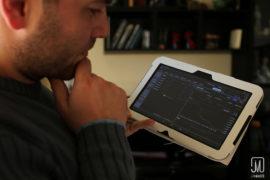
In early March, the central bank of Australia made a surprise announcement regarding its cash rate. Though most analysts expected officials from the Reserve Bank of Australia to announce a further slashing of the rates, the bank decided to keep them at their current level. That’s a historic low of 2.25 per cent, the lowest level since the ‘50s. The financial markets Down Under were all but sure that the RBA would announce a further cut, thus bringing the rates down to a nearly unprecedented 2 points. Market indexes had pegged the slash as being right under 60 per cent certain. This certainty was actually somewhat confirmed by RBA officials, who made strong hints that there would be a follow-up to the rate cut in February. That was the first one in a year and a half and everybody had good cause to believe there would be more where that came from.
On the eve of the announcement, share, and property trading activities soared, with demand increasing to incredible levels. Forex trading was already on the up and up, even though the US dollar had been stuck at relatively low levels for some time. And then the RBA made its surprise announcement, which many believe was due to the fact that activity on the Sydney property market is on an upward trend. Usually, base rates are lowered when the central bankers feel homebuyers are unable to afford their mortgages. The rate cut in February, however, did determine a strong response on the housing market in Sydney. So, how is this latest cash rate decision going to affect the Australian financial markets in the near future? Here are some forecasts:
Claim up to $26,000 per W2 Employee
- Billions of dollars in funding available
- Funds are available to U.S. Businesses NOW
- This is not a loan. These tax credits do not need to be repaid
The Australian dollar bounced up, then back again
As is usually the case, the rate of the Australian currency was sharply impacted by the RBA’s decision, albeit only temporarily. The decision was announced on Tuesday, March 3, which made the dollar jump up by US$0.040, up to US$0.782. However, after this afternoon spike, the currency was back to a more balanced rate of US0.7823. Experts predict that the volatile currency market will continue to swing back and forth, as the more subtle effects of the RBA’s decision are felt. For the time being, however, no major upswings or downswings for the Australian dollar seem to be on the horizon.
The Aussie stock market is still poised for a boom
As some of the country’s more bearish share market analysts have pointed out, the index is very close to breaking through the historic threshold of 6000 points. Immediately before the RBA’s announcement, the market moved up, as investors were poised for ever cheaper loans and lower profits from their bond investments. Yet when the market closed on the day of the announcement, the S&P ASX200 index had lost 25 points, down to 5933.9. While some fund managers are optimistic about the market reaching 6000 index points, others warn that this would almost certainly bring about a price deflation, since low rates for loans cannot be indefinitely sustained.
Business owners in Australia have continued to ask for even lower interest rates in a series of statements released after the RBA cash rate announcement. They demanded a monetary policy that would ease up on them and stimulate revenues. RBA Governor Glenn Stevens once more indicated that a further monetary policy easing might be in order in the coming months. He cited a need for sustainable demand growth and lower inflation as the main reasons for which the central bank is still considering another slash.
Overall, Australia seems en route for full economic recovery, even though the country’s central bank doesn’t see things this way. Property prices may be on the up and up, but wage growth is shaky and unemployment levels are still relatively high. The poor state of the job market, with too little room for adding new jobs is a major factor in future RBA decisions, as is the excessively high price of the country’s currency. Foreign trade is also a decisive element in this sense: China’s economy is still on the up and up, but its pace of growth has continuously slowed down over the past few years. Most bankers, among whom Bill Evans, the chief economist at Westpac, seem to believe that Australia’s biggest trading partner will continue this trend in the coming months.



